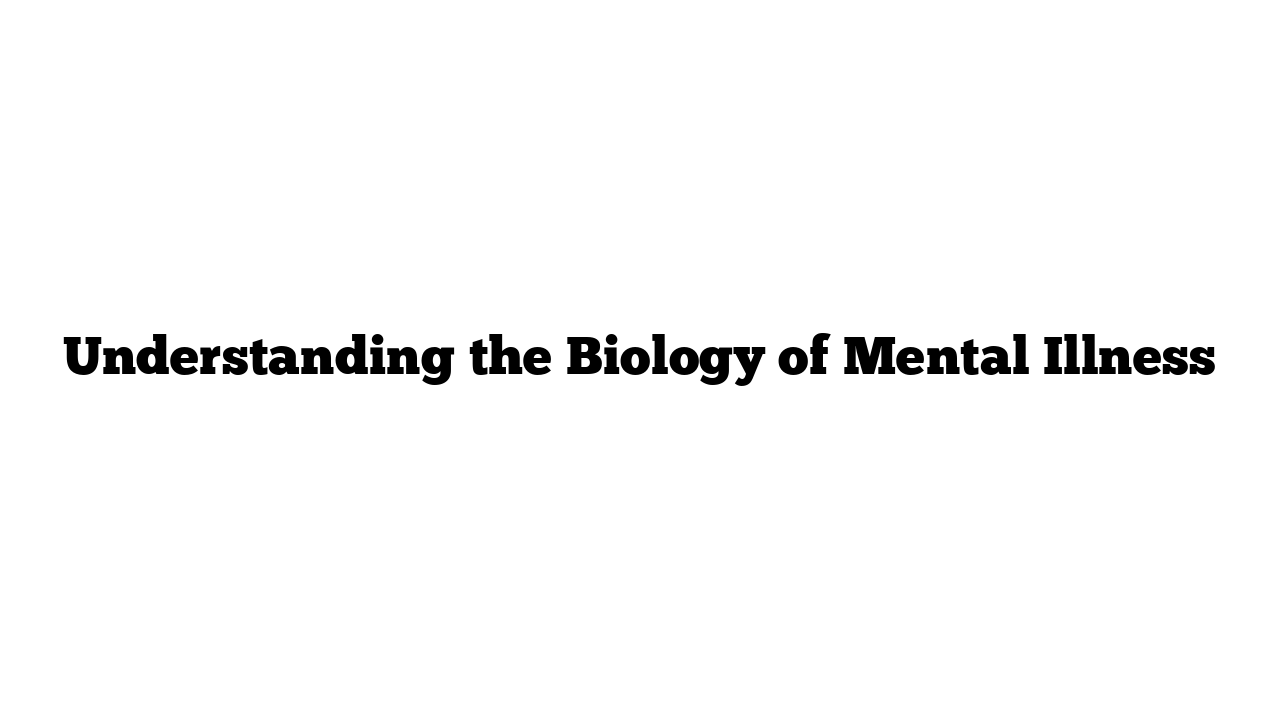What is Mental Illness?
The term “mental illness” suggests a problem with the brain. But is it just an abstract issue, or is there a physical basis to mental illnesses? As scientists investigate these conditions, they discover how the biological processes of the brain change when someone experiences a mental illness. To grasp what mental illness entails, it’s crucial to understand how the brain functions.
The Brain: Our Master Control Center
The brain is our most complex organ, often referred to as the master control center of the body. It regulates all bodily functions through specialized cells known as neurons. These neurons have precise connections with other neurons, sensory receptors, and muscle cells, allowing them to produce specific actions.
The brain consists of specialized networks of neurons responsible for various functions, including movement, vision, and complex cognitive processes. Neurons communicate using electrical signals and chemical messages.
Key Functions of the Brain
The brain’s functions can be categorized into six main components:
- Cognition (Thinking): This includes reasoning, problem-solving, and decision-making.
- Perception (Sensing): How the brain interprets sensory information from the environment.
- Emotions: The ability to experience and express feelings.
- Signaling: The brain’s responsiveness to environmental stimuli.
- Physical Sensations: The brain controls sensations in the body, influencing systems like the nervous, circulatory, respiratory, digestive, genitourinary, and musculoskeletal systems.
- Behavior: All actions and behaviors are regulated by the brain, interlinked with its other functions.
It’s essential to recognize that most brain functions are interrelated. For example, feeling sad can influence mood, physical state, and behavior, potentially leading to headaches or social withdrawal.
The Link Between Brain Function and Mental Illness
Mental illness arises when the brain does not function properly. This can manifest in several ways:
- Specific Brain Areas: Certain regions of the brain may not be working effectively, such as those involved in memory storage.
- Overactivity: Some brain parts may signal excessively, leading to inappropriate bursts of activity.
- Network Disruption: Connections between different brain networks may be impaired, making coordination difficult.
- Neurochemical Imbalance: Neurotransmitters, the chemical messengers in the brain, may not communicate effectively.
Imaging Techniques in Brain Research
Scientists use specialized imaging techniques to explore brain function. One such technique is positron emission tomography (PET), which measures the movement of a radioactive chemical in living tissues, providing a view of brain activity.
For instance, comparing PET images can reveal differences in brain activity. One image may show a healthy brain at rest, while another illustrates the brain of someone with schizophrenia, highlighting areas of increased or decreased activity.
Another set of PET images may reveal changes in brain receptors between individuals with and without depression. These receptors are crucial for transmitting electrical and chemical signals in the brain. In healthy brains, a radioactively labeled chemical binds to these receptors, showing bright areas on the PET images. In contrast, the brains of individuals with depression show reduced binding, indicating a deficiency in receptor function.
Causes of Brain Illness
The brain can become “sick” in various ways:
- External Damage: Injuries, blood vessel ruptures, or severe stress can harm the brain.
- Infections: Conditions like meningitis can infect the brain.
- Genetic Factors: Each brain has a pre-programmed developmental pathway; issues in this programming can lead to improper brain development.
Defining Mental Illness
Mental illness is characterized by prolonged disturbances in a person’s emotions, thinking, or behavior, leading to significant challenges in daily life. These disturbances are severe enough to require professional intervention. Symptoms of mental illness can include sadness, cognitive difficulties, and delusions.
Myths vs. Realities of Mental Illness Treatment
Numerous myths surround mental illness and its treatment. Here are some realities:
- Effective Treatments Exist: Both psychological and medical treatments can be beneficial.
- Recovery is Possible: Many individuals with mental illness improve and can maintain wellness with appropriate treatment.
- Comparable Treatment Efficacy: Mental illnesses are not inherently more challenging to treat than other chronic conditions like diabetes or heart disease.
- Evidence-Based Treatments: Effective treatments are based on scientific research.
- Early Intervention is Key: The sooner treatment begins, the better the outcomes.
Treatment for mental illness aims to balance an individual’s biological and psychological systems, prevent symptom recurrence, and promote sustained recovery. With the right support and treatment, many people can achieve wellness and maintain it over time.
